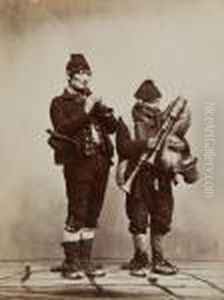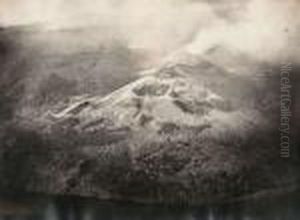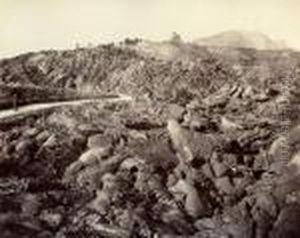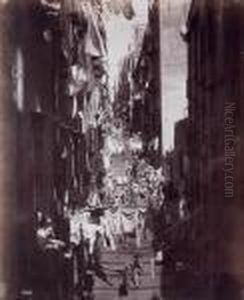Giorgio Sommer Paintings
Giorgio Sommer was a European photographer born in Frankfurt am Main, Germany, on September 2, 1834. He is best known for his work in Italy where he relocated in the mid-19th century. Sommer's photography spanned a variety of subjects, including portraits, landscapes, and cultural landmarks, particularly in Naples and surrounding areas. His work is significant for its documentation of the archaeological sites of Pompeii and Herculaneum, as well as the transformation of Italian society during his lifetime.
Sommer studied business in Frankfurt but was drawn to the burgeoning field of photography. After moving to Naples in 1856, he set up a studio and began his career in earnest. The city, rich in history and culture, provided ample subject matter for Sommer's lens. He established himself as one of the premier photographers of his day, capturing the essence of Italian life and the excavations of the ancient Roman cities that had been buried by the eruption of Mount Vesuvius in 79 AD.
Throughout his career, Sommer collaborated with other photographers such as Giacomo Brogi and formed partnerships that expanded his distribution reach throughout Europe. His studio produced not just prints, but also stereoscopic views and large-format photographs that were particularly popular with tourists as souvenirs and with scholars for study purposes. Sommer's photos are marked by their clarity, attention to detail, and composition, which made them stand out among the work of his contemporaries.
Giorgio Sommer was also active in the technical aspects of photography, experimenting with various printing processes and participating in international exhibitions. His reputation extended beyond Italy, and he became well-known throughout Europe. Despite his success, little is documented about his personal life, and he is primarily remembered through his extensive photographic legacy.
Sommer's photographs have become valuable historical records of 19th-century Italy. They offer insights into the urban and rural landscapes of the time, the state of archaeological sites during their early excavations, and the customs and fashions of the Italian people. Giorgio Sommer continued to work until his death in Naples on August 7, 1914. His photographs remain a testament to his skill as a photographer and his dedication to documenting the world around him.



